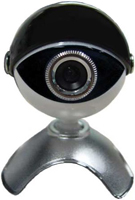The collapse of the global economy has left big business needing to cut costs in every coroner it possibly can. For many executives the solution lies in finding high tech alternatives to many of the most costly aspects of business. One of the most effective ways this is being done is through video conferencing.
The constant stream of meetings and sales pitches being presented all over the world in the flesh accompanied by high priced business class air fairs and four star hotel rooms are coming to an end. More and more organisations are looking to replace this with video conferencing, making international meetings a far quicker and cheaper process.
As the quality of video conference technology improves and the experience gets closer to that of a real life encounter the adoption of video conferencing technology is only going to become more wide spread.
Video conferencing is already available in extremely fast frame rates at full HD resolutions, but what else can be done to help make the form of communication seem more real. What are the technological developments we can expect in the next decade?
1 – Translation software
With video conferencing making global operations affordable for even smaller business, more business are going to be looking to have presence over seas and this will call for low cost translation services.
Translation software is quickly developing; two years ago we saw the iPod app that used it’s camera to instantly translate any written text, and this will quickly be combined with high quality voice recognition technologies that are become standard on the new generation of smart phones. We are not far off software that will quickly and efficiently translate the spoken word.
2 – Holographic projection
Previously the types of light needed for this kind of projection were too hot to be used in the kinds of small devices available in offices. However laser lighting means that holographic projectors will soon be able to be built small enough for not only office use, but could also be built into many portable devices such as smartphones.
Flash memory in smart phones could soon be replaced with a new storage format based on this technology, holographic memory. This will greatly increase storage capacities as the same area of a storage device can be used multiple times by projecting the light at different angles, read speeds will also become much faster as holo-memory can be read from many different points in parallel. This eliminates many of the large file size issues that have been hindering the spread of video technology
3 – Video takes over from the written word
As high quality webcams become more standard features on modern netbooks and better integrated with communications services such as Facebook, it is expected that people will begin to move away from writing emails and instead compose video mail instead.
For many a video message is quicker and easier and also seems more personal, now that it is as easy as clicking a button on Facebook to send one it is only a matter of time until they over take emails in the frequency with which they are sent for personal communication. The paper trail that emails leave behind may mean it takes longer for them to be used in business.
4 – A rise in personal broadcasting
YouTube videos are increasingly becoming an entertainment format that rivals television. The content on You Tube that is produced by individuals or very small companies is now genuinely entertaining yet far cheaper to produce than more traditional formats. With cost cutting becoming more essential these lower budget forms of entertainment are only going to increase. This could shift the way the entertainment industry is structured with more talent choosing to run there own company and be there own boss broadcasting themselves over the web.
5 – Increased usage of Telehealth
Also expect to see the medical industries developing more technologies based on video conferencing which will allow doctors to diagnose and treat patients from a distance. Telehealth hardware is already on track to be a $990 million market by 2015 and predictions are that this will continue to $6 billion five years after that.
At the moment telemedicine technologies are very much focused on developing countries, where there are shortages of doctors in rural communities. As telemedicine technology improves though it could be adopted in the west too allowing anyone to be treated by the best doctors in the world, no matter there location.



